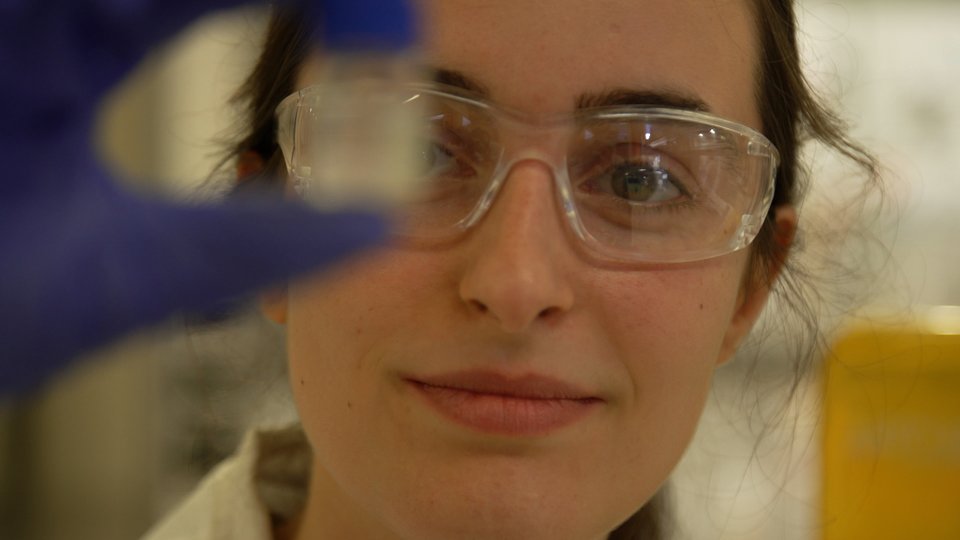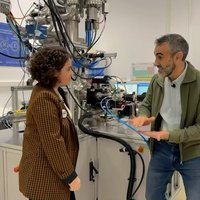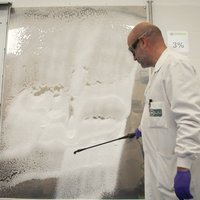The fragmentation of ships
This is a cemetery for ships too old to sail.
Every day, hundreds of workers dismantle large ships in the Turkish city of Aliağa, in the heart of the ancient Aeolian. The containers are disembarked and cut into small pieces on the concrete floor in order to avoid contamination that could be caused by fuel spills or toxic waste both on the floor and in the water.
The cut metal pieces are neatly cleaned before being sent to the foundries. Steel of this origin represents 3% of the gross steel production in Turkey.
Dimitris Ayvatoğlu/Aliaga shipyard owner:
"All packaging inevitably ages and must never be discarded, so the best way to do this is to recycle. There is a lot of steel in the containers, especially steel, but there are also many other items that can be reused or recycled."
Every year, between 200 and 600 large ships are dismantled around the world.
The concern about the damage this industry could cause to the environment has prompted the EU to fund a research project to make ship dismantling safer and greener. It is called DIVEST and it analyses the social, technical, economic and environmental issues that affect the dismantling of ships.
Jean-Christophe Saint-Genies/DIVEST Project Coordinator: "The main peculiarity of
our project is the application of a holistic approach, a comprehensive and integrated approach based on research carried out both by the shipbreaking industry and by several autonomous public bodies. It also relies on real case studies and analyses conducted by the scrapping industry to examine various issues and dimensions of its performance.
Despite international efforts to establish common standards for ship dismantling, the methods and conditions currently followed vary widely from country to country.
What the experts want is a reliable database of various practices that will help them improve the situation.
Selim Alkaner / Technical Coordinator of the DIVEST Project:
"First know your problem, observe and understand it; then start collecting data and making measurements. If you can measure it, then you can also manage it. But if you can't measure it, you can't even manage it. We want to fill this gap with measurements. This is one of the main motivations of our project, the collection of quantitative data."
European and Turkish ship dismantling facilities represent only a small part of the total market. More than 80% of the world’s shipbreaking takes place in India, Pakistan and Bangladesh, where labour is cheap and the profit of shippers is higher.
There are no waterproof floors or heavy machinery to be seen here; the boats here are dismantled on the beaches, never in very dangerous conditions.
In other words, there are many accidents, there are high health risks and dangerous substances contaminate large areas of the coast.
But this industry has brought thousands of jobs to very poor regions. In addition, the manual execution of the work implies greater precision in the classification of the topics. This is because every piece of value is carefully removed from the container for reuse or recycling.
Assisted by Shyam R. Asoldakar/Professor at the Indian Institute of Technology in Mumbai "As far
as India is concerned, we are not talking about dismantling. On the contrary, we are recycling the ships. Because this is the main difference between ordinary ship dismantling and ship recycling in India: every item that can be reused or recycled is reused or recycled in one way or another.
The price is the decisive factor for boat owners: In Europe they make about ten times more profits by dismantling their ships in Bangladesh, where safety standards are the lowest in the world. During the regular meetings of the DIVEST project, scientists present their findings in order to spread the data in the industry.
In the meantime, the carcass of Full City is located in the Swedish city of Göteborg. The Chinese tanker crashed dry on a large galerna off the coast of Norway, severely damaged the hull, and the fuel it lost polluted the coast. Before returning to
China, it is necessary to replace several metal sheets on the surface of the helmet. Therefore, researchers will have a good opportunity to measure some of the typical risks associated with dismantling ships.A
video camera records all the actions of the workers together with the data on the level of smoke received by means of sensors that can be carried on them.
Ing-Marie Andersson / Professor at the University of Dalarna"We
have a dust and particulate measuring device here in the backpack, we also have telemetry equipment so that we can send a signal to this computer. Finally, we have a small tube here, in the breathing path, with the instrument to be able to analyze the air as inhaled by the operator.
In Sweden, workers wear gas masks to protect themselves from smoke. But in South Asian countries, inhaling smoke kills ship breakers.
Sonny Nilson is well aware of the dangers at the shipyard. He has worked for thirty years at the Göteborg shipyard.
Sonny Nilson - employee of Cityvarvet at Gotaverk"You could
end up burnt. Or succumbed to a great height, especially in winter, when everything is slippery. Or, of course, beaten at all times by something falling from the head. I think we’re going to be the last generation to be here. It’s a dirty and dangerous job, and today’s young people prefer to work with computers.”
Strict monitoring of workers’ actions could lead to reduced exposure to toxic fumes. And that could save lives.
Gunnar Rosen / Dalarnako Unibertsitateko irakaslea"Telebista-pantaila
honetan dugu zaintzen ari garen langilea; barra gorri horrek adierazten du zaintza-tresnak bidaltzen duen informazioa: zenbat eta luzeagoa izan barra, orduan eta handiagoa esposizioa..." "That's for smoke and dust, but we also have tools for noise and solvents. We can also monitor muscle activity, heart rate and any variables that interest us."
The governments of South Asia are in need of this data if the working conditions of the shipbreaking industry in their countries are to be effectively improved.
Among the major countries involved in ship dismantling, so far only India has developed some infrastructure for hazardous waste management, staff training and health care in recent years. Bangladesh and Pakistan are going after him, but they have declared their desire for improvement. Assisted
by Shyam R. Asoldakar / Professor at the Indian Institute of Technology in Mumbai"I
tell you the truth, change is happening everywhere. It’s only a matter of time before we see a much better situation every year.”
Buletina
Bidali zure helbide elektronikoa eta jaso asteroko buletina zure sarrera-ontzian










